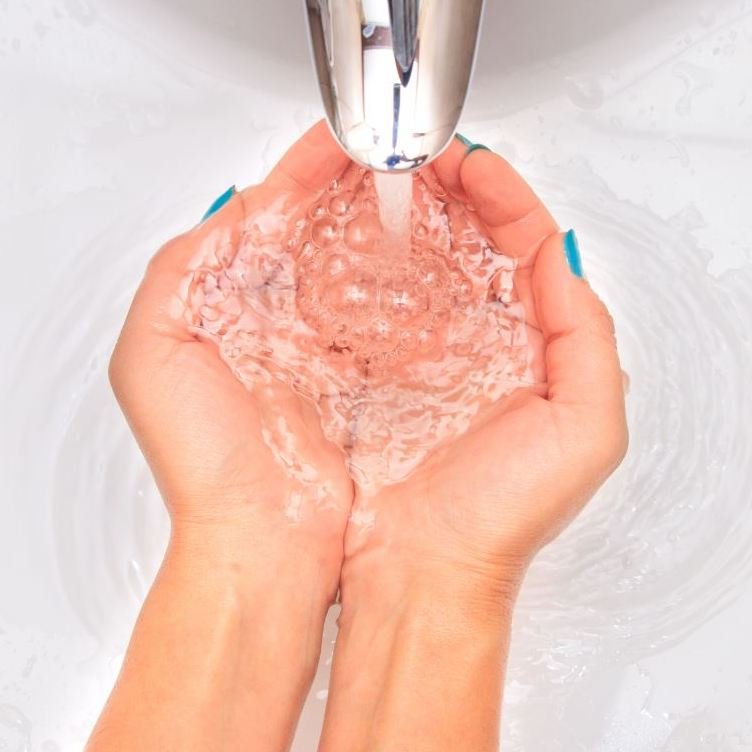The Weekly Dive #13
You can now harvest up to 2.5 gallons of alkaline water from the air at home. TidalWatt's underwater turbines are 60x smaller and produce 3x as much energy as wind turbines. The water industry cannot ignore digitisation and we explore why. Industry experts share their views on the water-tech investment landscape in 2023. Sea sponges and marine bacterias could help us fight COVID. This week, we are highlighting David Katzev, one of HydroDAO's key advisors. Learn about his impressive background and why he is passionate about water.
Your weekly Bonus - What do the new PFAS restrictions mean for 2023?
This week's quote:
“From birth, men and women carry the
weight of gravity on their shoulders.
They are bolted to the earth.
But they have only to sink beneath the
surface of the sea and they are free.”
- Jacques Yves Cousteau
What's New with Water?
Pioneering air-to-water technology harvests high-quality drinking water at home
This air-to-water dispenser makes up to 10 liters of alkaline water per day.
Underwater Turbines’ Energy-Capture Blows Wind Model Out of the Water
Brazilian startup TidalWatt's underwater turbines are 60x smaller and produce 3x as much energy as wind turbines.
Wastewater recycler Membrion makes light work of removing heavy metals
PureTerra, a venture firm that aims to fund “disruptive water technologies,” is pumping millions into Membrion.
The Water Council announces winners of 2022 Tech Challenge
This year’s Tech Challenge awarded $10,000 prizes to a Slovakia-based company and a Texas-based company.
What's New in the Industry?
What does the investment landscape look like for the water-tech industry in 2023?
Ahead of the World Water-Tech Innovation Summit in London (February 21-22), we asked eight investors, accelerators and utilities for their investment predictions for the year ahead.
Why the water industry cannot ignore digitisation
Amara's law state that we tend to overestimate the impact of new technology in the short run, and we underestimate it in the long run.
Saudi private sector to drive industry growth as Kingdom ups desalination capacity
The Kingdom is investing greatly in wastewater treatment infrastructure to allow the recycling and reuse of water.
Growing Israel could need dozens more desalination plants by 2065
A study finds that Israel’s rising population levels could require the construction of 30 new reverse osmosis facilities.
What's New in the Science?
Swimming in Open Water Poses a Serious Risk Few People Know About
A new study warns there is evidence linking the sport to a lung condition called swimming-induced pulmonary edema (SIPE).
Breakthrough in fighting Legionnaires’
A new study of domestic and hospital drinking water systems found Legionella in 41% of samples.
COVID-fighting chemicals identified in sea sponges and marine bacteria
The compounds found are effective against several variants including delta and omicron.
Agronomist checked whether hydrogels can save agriculture from water shortage
It turned out that this approach is unlikely to help save agriculture from drought.
David is a senior civil engineer at the East Bay Municipal Utility District (EBMUD). EBMUD is a California public utility that supplies high-quality drinking water, generates renewable energy and provides wastewater treatment and pollution prevention services that protect San Francisco Bay.
Through a system of pipes and facilities, EBMUD supplies Sierra mountain water to 1.4 million East Bay customers. EBMUD's water service area spans 332-square miles in Alameda and Contra Costa counties, extending from Crockett in the north, southward to San Lorenzo, eastward from San Francisco Bay to Walnut Creek, and south through the San Ramon Valley.
For more than 50 years, EBMUD has helped protect public health and San Francisco Bay with wastewater treatment and innovative pollution protection programs. The wastewater system serves approximately 685,000 people in an 88-square-mile area along the east shore of the bay.
Thank you David for your work and leadership in bringing clean drinking water to our communities.
What's in the Future?
2023 Is Ushering In New Wave Of PFAS Limits For Drinking Water, Industrial Operations
“Laws and regulations restricting ‘forever chemicals’ in more than a half dozen states are entering effect in 2023, including the start of a timeline for a first-in-the-nation ban on PFAS in all products in Maine”














